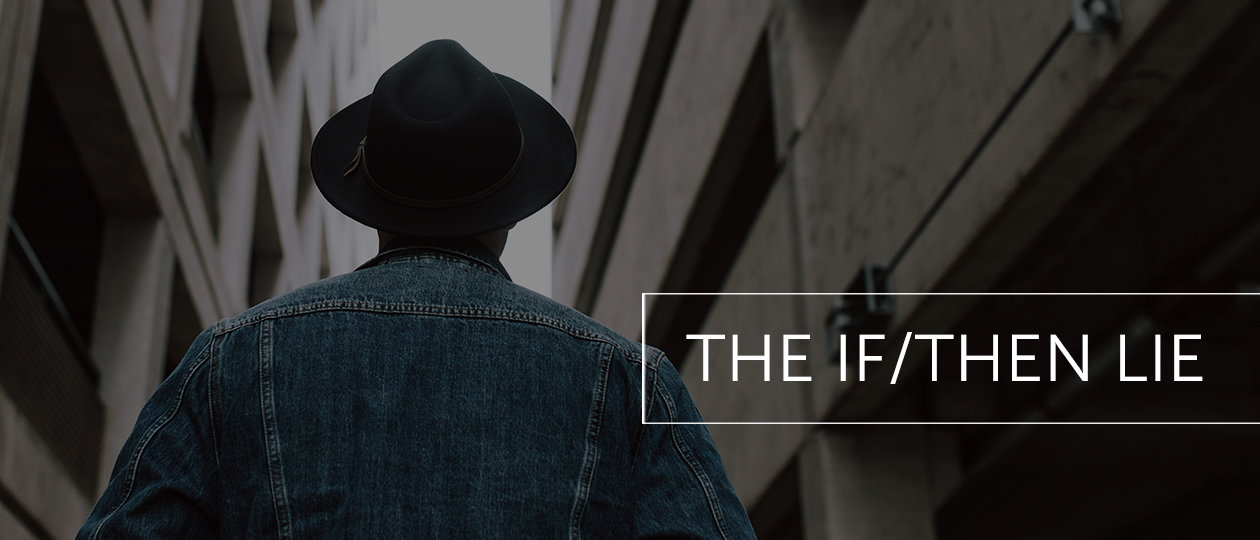The If/Then Lie
Back in 1981, I took a hike at Fall Creek Falls state park with about a hundred of my teenage friends. About halfway through, we stumbled across a rattlesnake, but what fascinated me wasn’t the snake, but the reactions people had to it. It was a bit like a bell curve. Me and most of the others were moderately frightened and backed slowly away, but a few people had different reactions. Some ran away screaming like someone was chasing them with a knife, while a handful of others got even closer—it made their day! Turns out that a couple of them regularly went out to try to catch live snakes. I wondered what could cause these similar people to have such different reactions.
Years later, I had another interesting experience with my eldest son, Harry. He was five years old at the time. I was in graduate school at the time and would play with Harry every day until it got dark. On this particular occasion, he suddenly started screaming, running away and yelling something incomprehensible. When I finally got him calmed down and went to investigate, I discovered a stick that he was certain was actually a snake. Even when he got close enough that it was obvious, he could not be told otherwise. I later found out that he had just watched a Discovery channel special on snakes. Harry was tricked by an if/then belief, and it completely changed his reactions to his circumstances for the worst.
Everyone thinks that they do what they do because they make a conscious choice after weighing the evidence, but they’re wrong. The latest research says that we do what we do based on our internal memories and the beliefs that come from them. In other words, our choices aren’t really our own.
Now here’s the alarming part. The very latest research from Scientific American and many other sources says that our memories have so many errors that it would be more accurate to call them illusions. The result is that internally, on the level that determines our decisions and behaviors, we’re believing many things about our lives and circumstances that simply aren’t true.
I’ll give you an example from my own life. When my dad hit me as a child and told me I was never going to amount to anything, it created an error, a false belief that I would never amount to anything. The result was that for the next fifteen years, I lived out that belief. The lie was that what my dad said was true. Of course, I knew that he only did it because he was upset about being diagnosed with a heart problem that at the time meant he was probably going to die, but that didn’t matter. The belief was still there. If my dad hit me and said what he said, then I would never amount to anything. Of the thousands of people I’ve worked with over the years since then, virtually every one of them has had a similar if/then belief at the heart of their problem.
Now the “If” is typically true, though not always. Usually it’s the simple fact of what happened. My dad really did hit me and say those things. The “Then” is where you find the lie. It’s the perception, or the internal interpretation of the event. Just because my father said those things, I didn’t need to live them out. Consciously, I knew that almost immediately, though it took a long time to convince my unconscious mind. I can’t count how many people I’ve worked with over the years who have healed from physical health issues once they were able to correct those faulty beliefs. I’ll tell you one more thing from experience, trying to change them with mental willpower is a proposition with a 99 percent failure rate. You need a mechanism that does it automatically, and we have one available for free.
Have a blessed, wonderful day!
Alex Loyd




Add a Comment